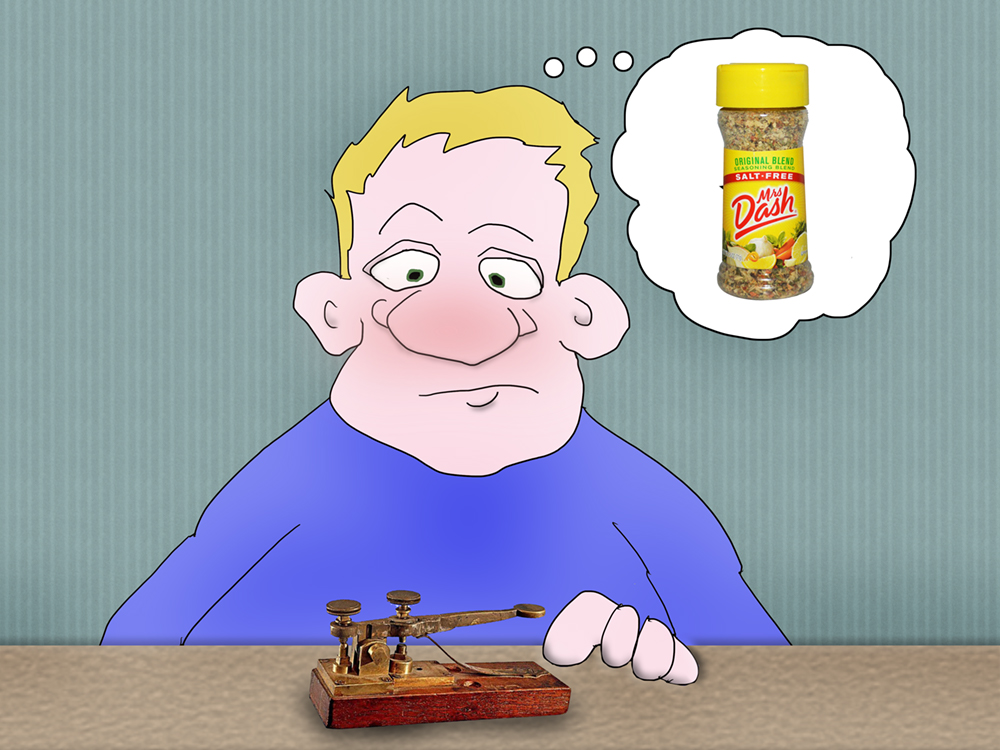When I was a kid, I wanted to learn Morse Code. I’d watch an old war movie with my sister, and there those guys would be, facing the most horrific of odds, tapping out the dot, dot, dots, as everyone hovered around watching. Dot, dash, dot. Sweating, hovering, watching. Dash, dash, dash.
We rigged up a little thing with a kitchen spoon, a little wood box one of us made at camp, and some copper wire. Julie and I would sit at the dining room table, dashing and dotting, saving the world from some Russian submarine. Somewhere.
Then we’d grab a snack.
All those heroics have a way of making you hungry.
This all came back to me, as I saw it was Samuel Morse’s birthday today, this 27th of April. Morse was born in 1791. In Charlestown, Massachusetts. After his early educational life, Samuel Morse nobly went on to Yale College. But his subjects were a little wonky if you ask me. He was to receive instruction in the subjects of religious philosophy, mathematics, and the science of horses.
Now, if I am a guidance counselor at Yale, I’m not sure I would point someone quite in that direction. Philosophy, math, and horses. I don’t know. Some kind of religious leader for horses who know calculus? At any rate, that college-combo turned him into a painter.
Not the painter of houses, although he might have done some of that, who is to say. No. Morse was a gifted painter, like portraits, and such. His early work attracted the attention of the notable artist, Washington Allston. And this Allston guy wanted Morse to accompany him to England to meet the artist Benjamin West.
Sounds like a painting party to me.
At any rate, Morse went and studied painting in England for three years. He became quite accomplished. He produced a masterpiece, the Dying Hercules. And when he came back to the states, he did things like paint the portraits for the House of Representatives, President James Monroe, the White House, Eli Whitney, and many more.
He traveled a bit here and there too. While returning by ship from Europe in 1832, Morse encountered Charles Thomas Jackson of Boston. This Mr. Jackson was a man who was well-schooled in electromagnetism.
I guess Morse was drawn to him.
Anyway, after he witnessed various experiments with Jackson’s electromagnet, Morse developed the concept of a single-wire telegraph. He was working on a painting at the time, called The Gallery of the Louvre. He set this work aside to focus on the original Morse telegraph. He submitted with his patent application in 1832. It wasn’t long before the Morse code, which he developed, would become the primary language of telegraphy. All the world around. It is still the standard for “rhythmic transmission of data.”
It sounds like there were a lot of intermingled details in getting the thing robustly in place. Demonstrations, installations, and on. Years of this back and forth-ness. Morse received a patent for the telegraph in 1847.
And some other things, you see.
Morse was a leader in the anti-Catholic and anti-immigration movement of the mid-19th century.
In the 1850s, Morse became well known as a defender of slavery, considering it to be sanctioned by God.
So, there are some other things.
He made money along the way too. He died in New York City on April 2, 1872. At the time of his death, his estate was valued at some $500,000 (an estimated $10.7 million today).
Samuel Morse had some gifts and he shared those talents with the world, giving all of us the telegraph and Morse Code. And lots of painting. At the same time, he was giving the world other things too. Support of slavery, and movements against people because of their religion, or heritage.
When I learn about a historical person such as this, I can only hope that the Universe was spinning in the good direction on those days. So that his accomplishments of decency somehow found footing and stuck, while the bad parts, fell away.
Like when you were a kid, and you trip while carrying your dinner plate. The cheeseburger stays in place, but the lima beans slide off and fall on the floor. Yeah. Like that. All because you were dash, dash, dashing, at just the right moment.
==========
“A wonderful fact to reflect upon, that every human creature is constituted to be that profound secret and mystery to every other.”
― Charles Dickens, A Tale of Two Cities
===========
“Cruel people offer pity when they no longer feel threatened. However, kind people offer compassion and understanding regardless.”
― Shannon L. Alder
==========
“The single biggest problem in communication is the illusion that it has taken place.”
― George Bernard Shaw
===========
A little dash here, a little dot there.
